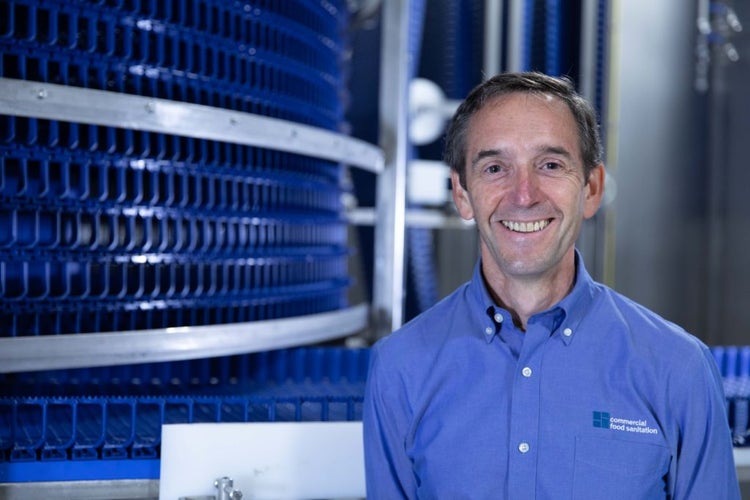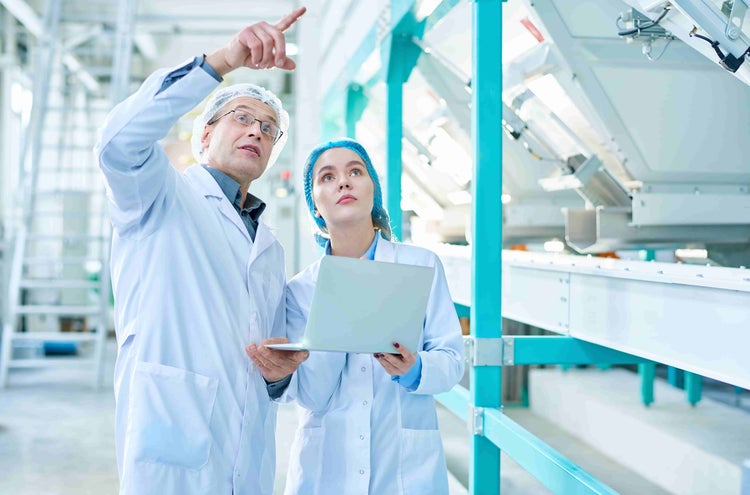Facing the Common Enemy

Countering survival tactics of microorganisms
The first thing that’s striking is how tiny they are – thousands of microbes can hide in the full stop at the end of this sentence. Then you realise that their microscopic size is just one of their survival tactics. How can we beat them? For a simplified scientific explanation of the types, hazards and survival tactics of microbes, EHEDG Connects turned to microbiologist Richard Brouillette.
Microorganisms tend to be elusive, until they strike and poison our food – and harm our health and the reputation of our food companies. To know our enemies a little better, EHEDG Connects puts the most common (and most dangerous) microbes under the microscope of microbiologist Richard Brouillette. He helps us understand how they live and grow, how they survive attacks and how they multiply and eat – for these are the common enemies we need to defeat.
What types of microbes represent the biggest threat to our food safety?
Richard Brouillette: “First we need to understand that the term microorganism, or microbes, encompasses all species of fungi, bacteria, and viruses. When we focus on microbes that can be found in food processing equipment, we could say that most fungi are merely spoilage organisms that don’t cause food poisoning. Some fungi are even used in food processes like baking and brewing to transform sugar into carbon dioxide gas and alcohol. Some bacteria can be useful as well, for example for making yogurt or cheese out of milk. Viruses form a league of their own. The ones that can be found in food can be hazardous, but they usually don’t derive from equipment since viruses cannot survive without a living host, so they are less an issue in food processing than bacteria that can very well grow on non-living surfaces. It’s safe to say that within the vast domain of microbes, pathogenic bacteria (the ones that can make humans ill) represent the biggest threats in food processing environments.”
What characteristics do most bacteria have in common?
“Bacteria are individual living cells. They can have a number of shapes, ranging from spheres to rods and spirals. Despite their simplicity, they have well-developed and unique cell structures which are responsible for their ability to adapt, to survive and to ultimately cause a variety of negative health effects. Unlike most other types of cells, the bacterial DNA is not situated inside a membrane-bound nucleus but moves around freely in the bacterial cytoplasm (the gel-like substance enclosed within the cell membrane). Also, their organelles (small organs that fulfil a variety of functions) are not membrane-bound like in many other types of cells. In bacteria, all the components, typically a few micrometers in length, roam around freely in the cytoplasm, rather than in separate cellular compartments. This enables the bacteria to transfer cellular information easily and to interact with other bacteria. This helps them to adapt to changing environmental conditions quickly. Perhaps the most obvious structural characteristic of bacteria is (with some exceptions) their small size, which allows for rapid uptake and distribution of nutrients and excretion of wastes. This makes bacteria evolutionary very fit."
How do they grow and multiply?
“Just like multicellular organisms, single-celled organisms like bacteria also have their distinct process of growth and reproduction. They reproduce through a form of cell division called binary fission: the cell grows to twice its starting size and then splits in two. Another phase of enlargement then follows this process if conditions like moisture, nutrition, pH and temperature are favourable. By absorbing water and food, a cell enlarges to its original size. Under favourable conditions, some kinds of bacteria can double their mass in about 20 minutes. Within 12 hours one single microorganism can produce almost 17 million cells. Depending on the type of surface and conditions, the bacteria cells will form long chains, flat plate-like colonies or irregular three-dimensional colonies.”
Are bacteria consistently growing at all times?
“During an initial period of one to several hours, there is little or no increase in cell numbers. This is the time the cells need to adapt to the new environment. When the cells begin to divide, they usually continue to do so at regular intervals until the maximum growth that can be supported by the environment is achieved. After this logarithmic phase of growth, the rapid growth can be halted again, this time by depletion of nutrients or accumulation of waste products. Unless the cells are transferred to a new environment that is capable of supporting continuous growth, they will eventually die.”
So they’ll die by themselves? That sounds comforting.
“Only if there’s not enough nutrition, which is rare in continuous food processing environments. Moreover, if the environmental conditions become unfavourable as a result of a lack of water and nutrition or severe temperature fluctuations, some bacteria types deploy an effective defense mechanism to protect the cells from dying. They will go into a sort of dormant state, by forming an endospore. In this stage most metabolic activity is suspended, the bacterium duplicates its DNA, and a hard, resistant wall is formed around it, the endospore, which makes it very resistant to external influences. This way, endospores can remain alive even for a long time, even in poisonous chemical substances. When the conditions are favourable again, the endospore is set free and can start growing and reproducing again."
What other survival mechanisms of bacteria do we have to know about?
“Bacteria have some amazing survival mechanisms incorporated into their genome. They can, for example, produce a diverse group of enzymes and proteins, which help them overcome adversity. Bacterial cells also have amazing DNA repair mechanisms to preserve the integrity of the genome and are capable of lateral gene transfer. If there is a particular strain of bacteria that has acclimated to adverse conditions, the genes for that adaptation can be shared between bacteria. One of the most effective survival mechanisms of bacteria in food processing is when they form biofilms on surfaces. To do so, they produce chemicals that keep them together and protect them from the outside environment. The outside cells are more likely to be killed, but they then form even more of a barrier between the inner cells and the adverse conditions. Their ability to replicate quickly is one of the most effective defense mechanisms of bacteria. This allows them to gain both high populations and to evolve quickly. They can take large hits, and as long as a few survive, they can grow back without losing the mutations that are beneficial to their survival.”
After obtaining his degrees and working as an industrial microbiologist, Brouillette quickly moved to corporate sanitation and quality roles in which he developed sanitation and training programs for Kraft Foods North America and Mondelez International. Nowadays, Brouillette shares his expertise as an independent Food Safety Director for the consulting, training and education company Commercial Food Sanitation. For reasons of comprehensibility, EHEDG Connects unobtrusively asked Dr. Brouillette to refrain from using scientific jargon as much as possible.
View the EHEDG Connects Magazine page 36 for an info-graphic on the different types of pathogenic bacteria.



